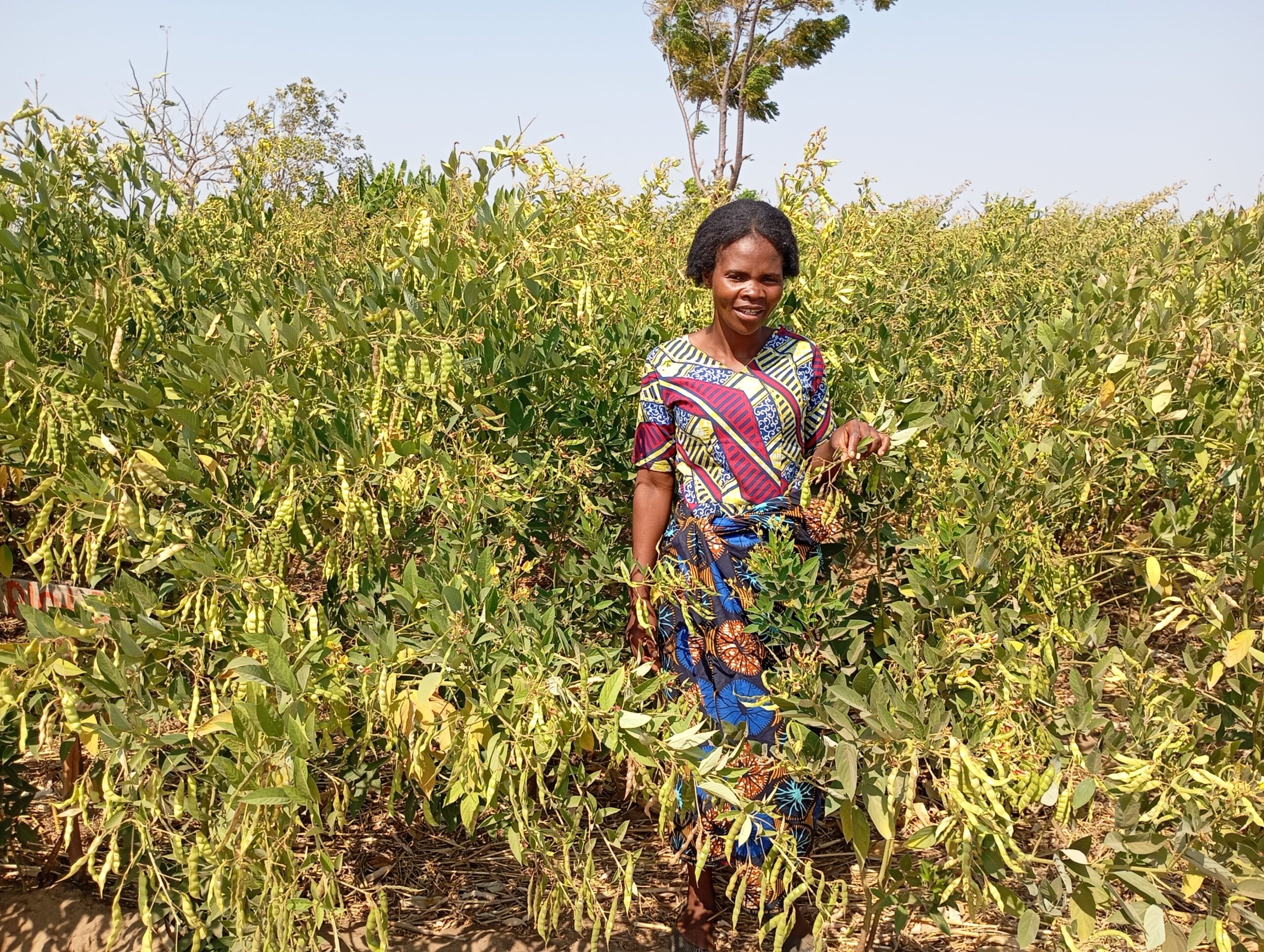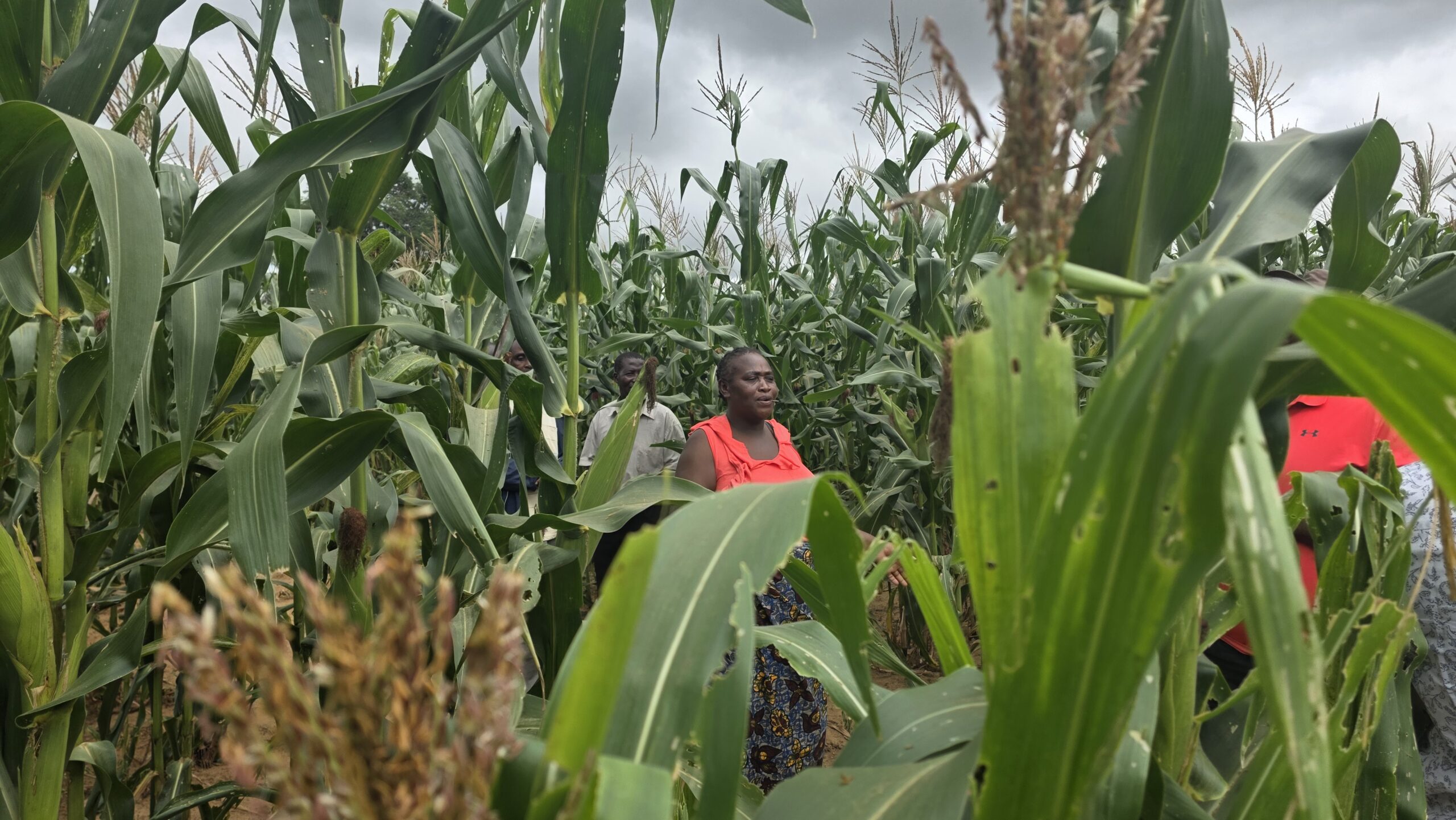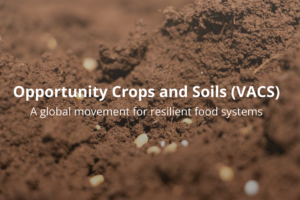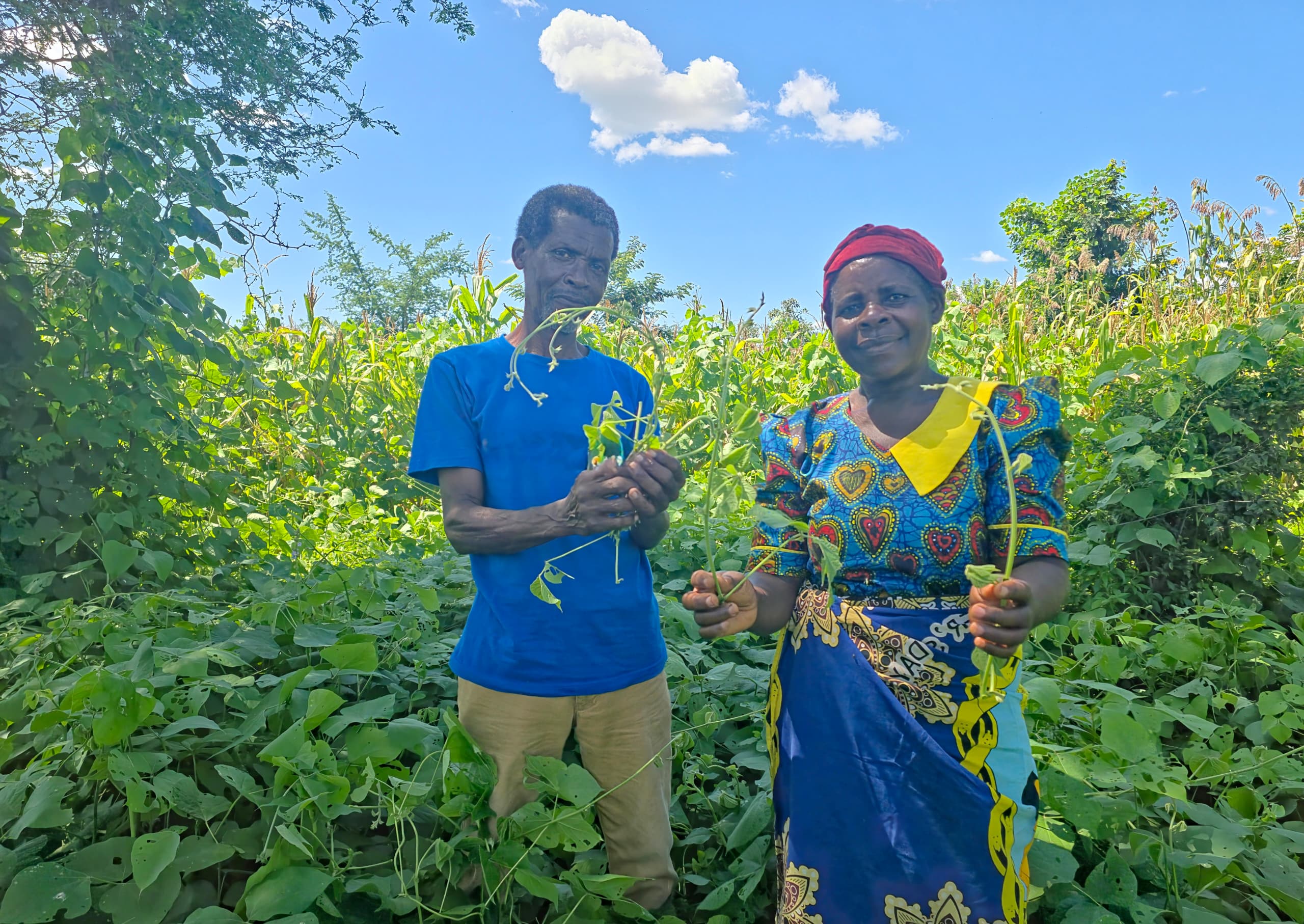
Driving through steep mountains, rocky paths, and crossing shallow, silted rivers to reach Balamanje in Zomba, Malawi, one is immediately struck by the contrast between the harsh landscape and the energy of its farmers. It is a dry, hot valley prone to drought—the kind of place where farming is not for the faint-hearted. Yet meeting Francis Mkwanda and his wife Annie George quickly lifts the heavy air, even as the dry heat settles on one’s skin.
Francis, a seasoned farmer since 1979, is one of the ten “mother trial” host farmers under a component of the Sustainable Farming (SF) program led by CIMMYT. For the past three years, he and his wife have been part of the program, which started as Mixed Farming Systems (MFS), testing, validating, and refining practices that integrate crops and livestock. On his trial plots, maize is either intercropped or rotated with several legumes such as lablab, a legume that improves soil fertility and doubles up as feed for his goats.
“We used to only grow maize, season after season,” Francis explains. “But with six children and the land giving us less each year, we had to look at other options.” That shift was not just smart but necessary in Balamanje, where droughts are frequent and the soil has seen better days.
What Francis appreciates most about the SF program is that it is practical. “It is food for us and feed for the goats, and the goats are like our bank,” he says with a smile. When the goats feed on lablab, they grow faster, get fatter, and fetch higher prices at the market. In a tough season, when crops underperform, goats fill the gap. That extra income has made a real difference, enough to send their last-born child to university, where he completed a Bachelor of Arts degree in Humanities. Yet that success comes with a trade-off. “We cannot grow our herd,” he admits. “Every time we think of keeping more, there is an emergency or the need to buy food,” says Francis. “So, we sell. We are depending on them more and more.” In a way, their goats are both savings and withdrawals. It is a cycle of necessity, where livestock provides liquidity in a place where formal banking is miles away.
The SF program, with a component led by CIMMYT in some parts of Malawi, focuses on creating equitable and transformative pathways for smallholder farmers through sustainable intensification. In drought-prone valleys like Balamanje, this means introducing practices that make farming more resilient, combining crop diversification, cover cropping, and livestock integration to improve soil health, animal nutrition, and income streams.
For Francis, the trials have brought clarity and purpose, despite the harsh weather. “We have seen the benefits. The goats are healthier when fed with maize stover mixed with lablab. They grow faster and sell better. Better feed, better prices, better soil.” Labor is not a barrier for him. “We are used to working hard,” he says. “The real reward is seeing that hard work pays off.”
In places like Zomba, where climate and topography work against farmers, it is the attitude that sets someone like Francis apart. It is his willingness to learn, to adapt when things fall apart, and to keep pushing. It is a quiet kind of resilience, built in the everyday choices farmers make to secure a future for their families.
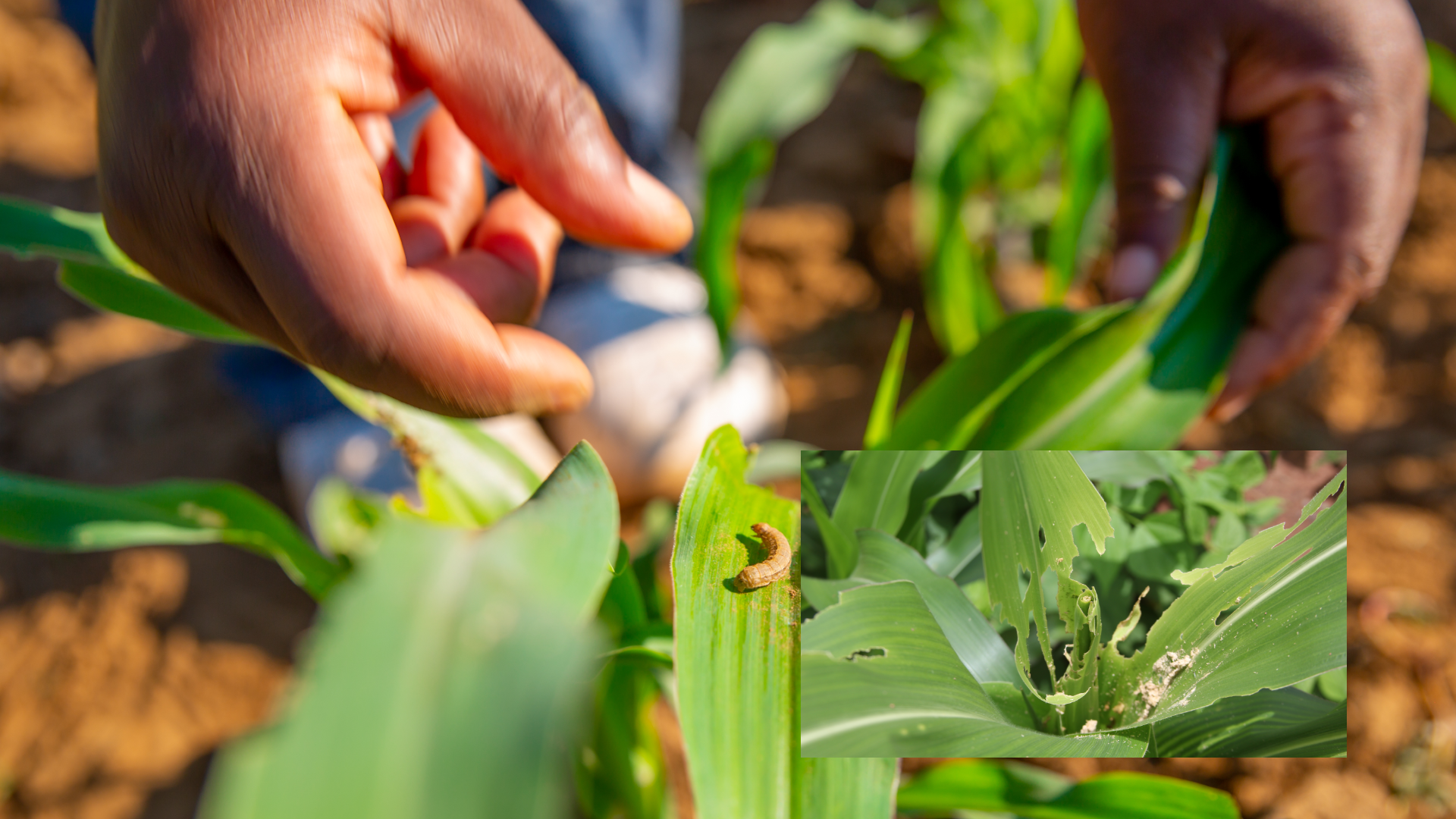
 Climate adaptation and mitigation
Climate adaptation and mitigation 